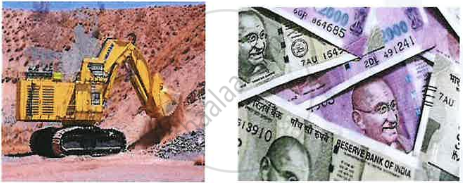Advertisements
Advertisements
प्रश्न
Justify the following in brief:
Capital is an immobile factor in the short run.
उत्तर
Capital is considered an immobile factor in the short run due to the fixed nature of physical assets and the time and costs involved in moving or repurposing them. Capital typically refers to assets such as machinery, buildings, equipment, and infrastructure that are used in the production of goods and services. These assets are usually tied to specific industries, locations, and production processes, making them difficult to alter or move over a short period.
For example, a factory or plant is usually built in a specific location to serve a particular production process. In the short run, it's nearly impossible to move this factory to a new location or repurpose it for a completely different production line without incurring significant costs and delays. Similarly, specialized machinery designed for a specific task cannot be easily adapted to perform a different function, which makes it difficult to redeploy capital quickly in response to changes in demand or market conditions.
This immobility contrasts with labor, which is more flexible and mobile. Workers can move between jobs, companies, or even industries with relatively less time and cost. In contrast, capital investments, such as heavy machinery or buildings, require substantial effort, time, and financial resources to relocate or reconfigure. These factors create a rigidity in the allocation of capital in the short term.
APPEARS IN
संबंधित प्रश्न
What is meant by capital formation
Explain three causes of low capital formation in India.
Answer the following question.
What are the features of capital?
Define or explain the following concept:
Capital
What is capital?
State whether the following statement is true or false. Give reason for your answer.
The capital like printing machines, tools when used in process of production are subject to depreciation.
If you make investments in insurances or mutual funds, then it will be called as ______ type of capital.
Analyse the images below and identify the factors of production and explain any one characteristic of the same.

Capital as a factor of production.
Creation of savings is the ______ stage of formation.
Using suitable examples, classify capital into fixed capital and circulating capital.
Distinguish between stocks of capital goods and capital formation using a suitable example.
Define human capital.
Distinguish between fixed capital and working capital.
Classify the following capital goods:
Machines
Which of these factors of production is called produced means of production?
